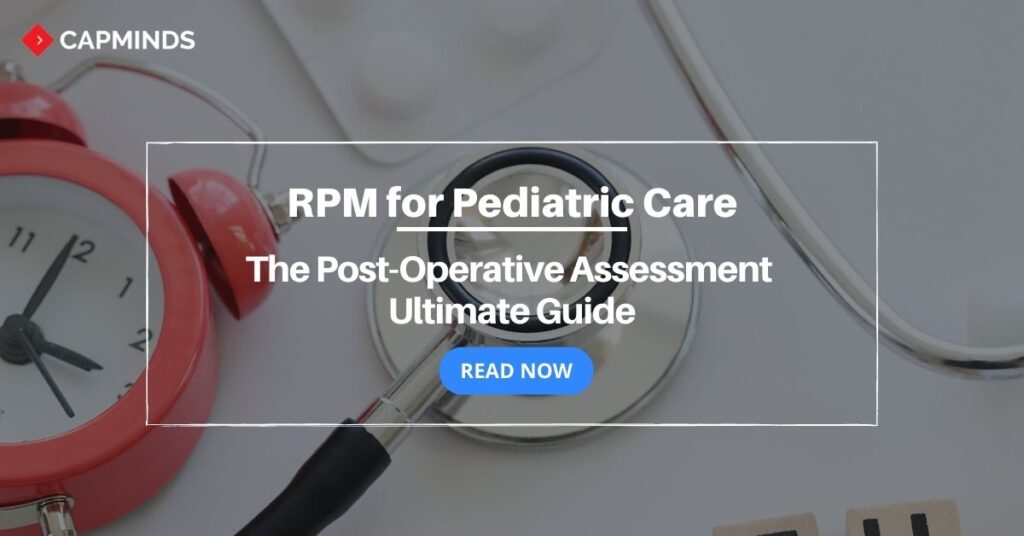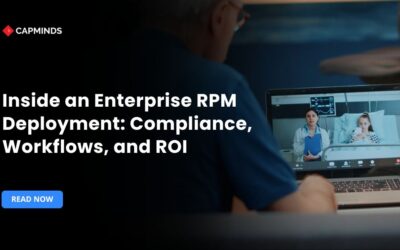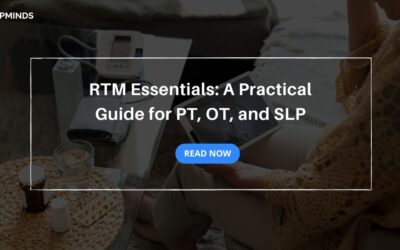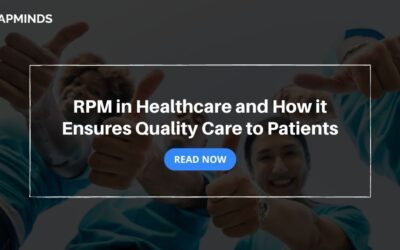What are the Post-Operative Assessments Provided by RPM for Pediatric Care?
Remote Patient Monitoring (RPM) has emerged as a valuable tool in pediatric dental care, revolutionizing post-operative assessments for young patients.
RELATED: Remote Patient Monitoring 101: Everything for 2023 & Beyond
RPM: The Care for Pediatric Emergencies
Remote Patient Monitoring (RPM) plays a critical role in addressing pediatric emergencies by providing timely and continuous monitoring of young patients, especially in situations where rapid intervention can be life-saving.
RELATED: Remote Patient Monitoring 101: The Ultimate Integration Guide
1. Real-Time Vital Signs Monitoring: RPM allows healthcare providers to remotely monitor vital signs such as heart rate, respiratory rate, oxygen saturation, and blood pressure in real-time. This immediate data access is invaluable in emergencies.
2. Early Warning System: RPM systems can be configured to alert healthcare teams when vital signs deviate from normal ranges, signaling potential emergencies such as respiratory distress, cardiac issues, or sepsis.
3. Remote Triage: In situations where pediatric emergencies occur at home or in remote locations, RPM enables healthcare professionals to assess the severity of the situation and provide guidance to caregivers while preparing for a hospital transfer if necessary.
4. Seizure Detection: For children with epilepsy, RPM can include seizure detection capabilities, allowing caregivers and medical teams to respond promptly during a seizure episode.
5. Asthma and Allergy Management: RPM can monitor lung function and allergic reactions in pediatric patients, ensuring early intervention in cases of severe asthma attacks or allergic responses.
6. Temperature and Fever Tracking: RPM systems can continuously monitor body temperature, alerting caregivers to fever spikes, which can be indicative of infections or other underlying issues.
7. Chronic Disease Management: In cases of chronic pediatric conditions, such as diabetes or congenital heart defects, RPM helps manage and detect emergencies related to these conditions through continuous data collection.
8. Post-Operative Recovery: After pediatric surgeries, RPM ensures that patients are closely monitored for any signs of post-operative complications, allowing for early detection and intervention.
9. Remote Consultations: RPM facilitates remote consultations with pediatric specialists, enabling timely evaluation and guidance during emergencies, even if the healthcare provider is not physically present.
10. Data History and Trend Analysis: RPM systems store historical patient data, aiding in the analysis of trends and patterns. This data can help identify early warning signs of emergencies before they become critical.
11. Customized Emergency Protocols: RPM systems can be configured with emergency protocols tailored to specific pediatric conditions, ensuring that caregivers and healthcare providers follow appropriate procedures during critical moments.
12. Parental Involvement: In pediatric emergencies, RPM keeps parents informed and involved, reducing anxiety and improving decision-making by providing real-time data and guidance.
The Post-Operative Assessments Provided By RPM For Pediatric Care
Remote Patient Monitoring (RPM) can provide valuable post-operative assessments for pediatric care, offering continuous monitoring and data collection even after the surgery has concluded.
- Pain Management: RPM can include pain assessment tools, allowing pediatric patients to report their pain levels. Healthcare providers can monitor these reports and adjust pain management strategies accordingly.
- Medication Adherence: For cases where post-operative medications are required, RPM can track medication adherence. This ensures that pediatric patients receive the prescribed treatments on time.
- Wound Monitoring: In surgeries involving incisions or wounds, RPM can capture images or data related to wound healing. Any signs of infection or delayed healing can be identified early.
- Respiratory Function: For pediatric patients recovering from surgeries that may impact respiratory function, RPM can monitor parameters like respiratory rate and oxygen saturation to ensure proper lung function.
- Fluid Balance: RPM can track fluid intake and output, which is important for maintaining proper hydration and monitoring for potential complications like fluid overload or dehydration.
- Temperature Monitoring: Continuous monitoring of body temperature can help detect fever or hypothermia, both of which can be indicative of post-operative complications.
- Mobility and Activity: For older pediatric patients, RPM can assess their ability to move and be active after surgery. Lack of mobility can lead to complications such as deep vein thrombosis (DVT).
- Nutritional Status: Monitoring of nutritional intake and weight changes is essential, especially in cases where pediatric patients may have dietary restrictions post-surgery.
- Psychosocial Well-being: RPM can include assessments of the child’s psychosocial well-being, allowing healthcare providers to address any emotional or psychological challenges the patient may be facing during recovery.
- Customized Care Plans: Based on the data collected by RPM, healthcare providers can create customized care plans for each pediatric patient, ensuring that their specific post-operative needs are met.
These post-operative assessments provided by RPM in pediatric care help ensure that young patients receive the appropriate care and attention they need during the critical recovery period following surgery.
It also allows for early detection of complications and the opportunity to provide timely interventions, ultimately improving the overall post-operative experience and outcomes for pediatric patients.
The Post-Operative Assessments Provided by RPM for Pediatric Dental Care
In the dental specialty, post-operative assessments provided by Remote Patient Monitoring (RPM) for pediatric care focus on monitoring and managing patients’ well-being after dental procedures.
1. Pain and Discomfort: RPM can track and assess a child’s pain levels post-dental surgery or procedures. Patients can report their pain scores, and healthcare providers can adjust pain management strategies accordingly.
2. Swelling and Inflammation: RPM can capture images or measurements of any swelling or inflammation in the oral or facial area following dental procedures. This helps in monitoring and managing potential complications.
3. Bleeding: RPM can monitor any post-operative bleeding, and patients can report the frequency and severity of bleeding episodes. Excessive bleeding can be promptly addressed.
4. Oral Hygiene and Care: Pediatric patients and their parents can receive guidance on proper post-operative oral hygiene through RPM. This includes instructions on brushing, flossing, and rinsing to prevent infections.
5. Dietary Restrictions: RPM can provide reminders and assessments related to dietary restrictions after dental procedures, ensuring that pediatric patients follow the recommended dietary guidelines to support healing and prevent complications.
6. Medication Adherence: For cases where post-operative medications, such as antibiotics or pain relievers, are prescribed, RPM can track medication adherence to ensure that patients are taking their medications as directed.
7. Temperature and Fever Monitoring: RPM can continuously monitor body temperature, helping detect any signs of infection or fever, which can be common post-dental surgery.
8. Remote Consultations: RPM facilitates remote consultations with dental professionals, allowing parents to discuss any concerns or questions they may have about their child’s post-operative dental care.
9. Dental Follow-up Appointments: RPM can schedule and send reminders for follow-up dental appointments to ensure that pediatric patients receive necessary check-ups and evaluations post-surgery.
10. Customized Care Plans: Based on the data collected, dental professionals can create personalized care plans for each pediatric patient, tailoring recommendations and interventions to their specific post-operative needs.
11. Symptom Monitoring: RPM can track and assess other symptoms that may arise after dental procedures, such as difficulty in eating, speech issues, or oral complications.
12. Orthodontic Device Monitoring: For pediatric patients with orthodontic devices or braces, RPM can assess the condition of these devices, ensuring they remain properly in place and do not cause discomfort or complications.
13. Parental Guidance: RPM can provide parents with guidance on caring for their child’s oral health during the post-operative period, including tips for maintaining hygiene and recognizing signs of potential issues.
These post-operative assessments provided by RPM in pediatric dental care are especially valuable in ensuring that young patients recover smoothly and minimize the risk of complications or discomfort following dental procedures.
Final Thoughts
Remote Patient Monitoring (RPM) has emerged as a valuable tool in pediatric dental care, revolutionizing post-operative assessments for young patients.
By continuously monitoring pain, swelling, bleeding, oral hygiene, and other vital aspects, RPM ensures a smoother recovery process while minimizing complications. It empowers dental professionals to provide personalized care plans and facilitates remote consultations, enhancing the overall quality of post-operative care. With its capacity to promote adherence to medication and dietary guidelines, RPM not only supports the physical healing process but also nurtures the well-being of pediatric patients.
This technology is a cornerstone in ensuring that children receive the best possible dental care and a comfortable post-operative journey.
Remote Patient Monitoring Solution from CapMinds
Be it treatment for anything, RPM’s role is vital. Its use of devices and delivering high-quality care remotely enables patients to relax and forget in-patient visit pressures.
Why choose CapMinds RPM?
- Simple new patient enrolment
- Manual & automated patient data access
- Customizable notification system
- Fully compliant billing
- Secure & HIPAA compliant
- Practice specific support
- Real-time tracking
- Better at-home chronic care management
- Reduced hospitalizations
- Efficient Remote Physiologic & Therapeutic Monitoring
- Easy service integrations and customizations – whatever you need!
CapMinds RPM solution allows patients to use digitally connected devices – like heart monitors and blood pressure cuffs to perform routine tests and share their health data with a healthcare professional. For more details visit our website and get started now with us on your journey to more success.
“Let’s make your practice more accessible to people around the world, together”




